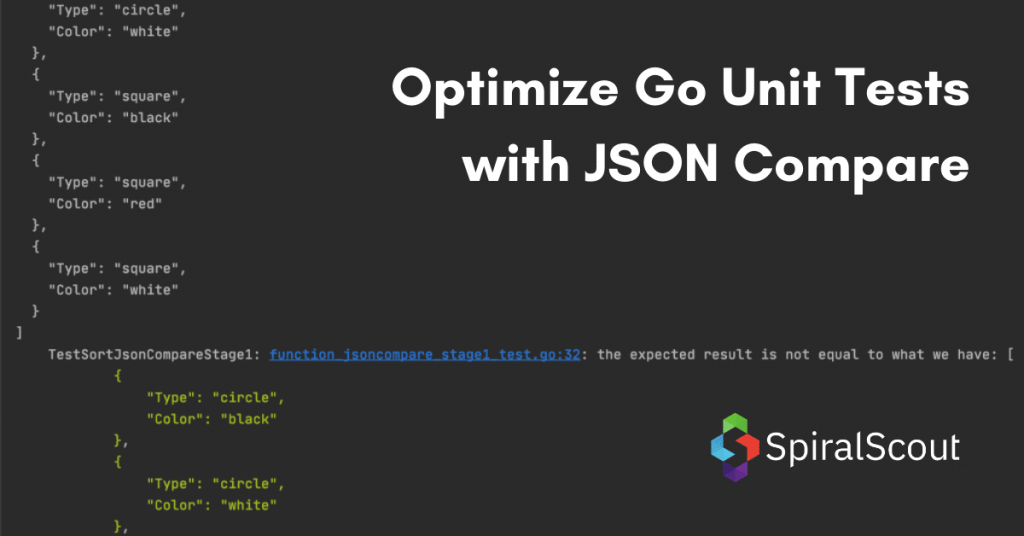
#Json compare format code
You can download the JSONLint source code on GitHub. Thanks to Douglas Crockford of JSON and JS Lint, and Zach Carter, who built a pure JavaScript implementation. As a solution, either use direct URL input, or make sure your content's newlines match the architecture your system expects! Credits
#Json compare format windows
Essentially, if you have just newline characters (\n) in your JSON and paste it into JSONLint from a Windows computer, it may validate it as valid erroneously since Windows may need a carriage return (\r) as well to detect newlines properly. This is possibly due to the way Windows handles newlines. If you use a Windows computer you may end up with different results. For example, always use double quotes, always quotify your keys, and remove all callback functions. Make sure you follow JSON's syntax properly.An empty object can be represented by.Objects are encapsulated within the opening and closing curly brackets.And though the knowledge of JavaScript isn't necessary, following specific rules is: Using JSON doesn't require any JavaScript knowledge, though having such would only improve your understanding of JSON. Countless JSON libraries are available for most programming languages.It's easy to analyze into logical syntactic components, especially in JavaScript.Compactness – JSON data format doesn't use a complete markup structure, unlike XML.Readability – JSON is human-readable, given proper formatting.Not only is JSON language-independent, but it also represents data that speaks common elements of many programming languages, effectively making it into a universal data representation understood by all systems. There are several reasons why you should consider using JSON, the key reason being that JSON is independent of your system's programming language, despite being derived from JavaScript. As such, it's used by most but not all systems for communicating data. It's a widespread data format with a diverse range of applications enabled by its simplicity and semblance to readable text. then, you can use your favourite tool for text file comparison. Very good tool for this job is jq ( where you can do: jq -S. JSON (pronounced as Jason), stands for "JavaScript Object Notation," is a human-readable and compact solution to represent a complex data structure and facilitate data interchange between systems. To compare json files you should convert them so they have same order of keys. Copy and paste, directly type, or input a URL in the editor above and let JSONLint tidy and validate your messy JSON code. In this JSON tutorial, we will learn the various concepts about JSON, with examples.JSONLint is a validator and reformatter for JSON, a lightweight data-interchange format. These name/value pairs reflect the structure of the data. In most languages, this is realized as an vector, list, or sequence.Īn example JSON document is: //JSON ObjectĪs we can see, the JSON document consists of name/value pairs. An Array or Ordered list of values surrounded by square brackets.In various languages, this is realized as an record, struct, dictionary, hash table, keyed list, or associative array.

An Object surrounded by curly braces and containing multiple name/value pairs.Primarily, a valid JSON document can contain two structures:

JSON DocumentĪ JSON document may contain text, curly braces, square brackets, colons, commas, double quotes, and maybe a few other characters. JSON’s Internet Assigned Numbers Authority (IANA) media (or MIME) type is application/json.


The standard file type for storing a JSON document in the filesystem is. The new specifications remove inconsistencies with other specifications of JSON, repairs specification errors, and offer experience-based interoperability guidance. In March 2014, Tim Bray corrected errata with the original IETF 4627 in IETF RFC 7158 and RFC 7159. In 2013, Ecma International also standardized JSON under ECMA 404. JSON Specificationsĭouglas Crockford originally created JSON in 2001, and initially standardized it in 2006 under RFC 4627 through the IETF. So while applications/libraries can parse the JSON documents – humans can also look at the data and derive the meaning from it.Īll modern programming languages (e.g., Java, JavaScript, Ruby, C#, PHP, Python, and Groovy) and application platforms provide excellent support for producing ( serializing) and consuming ( deserializing) JSON data. These are generally texts which can be read and written easily by humans and it is also easier for machines to parse JSON and generate results. The good thing is that JSON is a human-readable as well as a machine-readable format. These are language independent source codes used for data exchange and are generally lightweight in nature. This data interchange can happen between two computer applications at different geographical locations or running within the same machine. JSON (JavaScript Object Notation) is the most widely used data format for data interchange on the web.


 0 kommentar(er)
0 kommentar(er)
